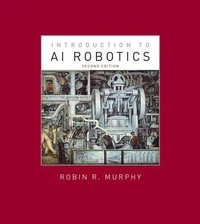A comprehensive, authoritative, and accessible reference for disaster robotics that covers theory, specific deployments, and ground, air, and marine modalities. This book offers the definitive guide to the theory and practice of disaster robotics. It can serve as an introduction for researchers and technologists, a reference for emergency managers, and a textbook in field robotics. Written by a pioneering researcher in the field who has herself participated in fifteen deployments of robots in disaster response and recovery, the book covers theory and practice, the history of the field, and specific missions.
After a broad overview of rescue robotics in the context of emergency informatics, the book provides a chronological summary and formal analysis of the thirty-four documented deployments of robots to disasters that include the 2001 collapse of the World Trade Center, Hurricane Katrina, the 2010 Haiti earthquake, the Deepwater Horizon oil spill, the 2011 Japanese earthquake and tsunami, and numerous mining accidents.
It then examines disaster robotics in the typical robot modalities of ground, air, and marine, addressing such topics as robot types, missions and tasks, and selection heuristics for each modality. Finally, the book discusses types of fieldwork, providing practical advice on matters that include collecting data and collaborating with emergency professionals. The field of disaster robotics has lacked a comprehensive overview.
This book by a leader in the field, offering a unique combination of the theoretical and the practical, fills the gap.
A comprehensive, authoritative, and accessible reference for disaster robotics that covers theory, specific deployments, and ground, air, and marine modalities. This book offers the definitive guide to the theory and practice of disaster robotics. It can serve as an introduction for researchers and technologists, a reference for emergency managers, and a textbook in field robotics. Written by a pioneering researcher in the field who has herself participated in fifteen deployments of robots in disaster response and recovery, the book covers theory and practice, the history of the field, and specific missions.
After a broad overview of rescue robotics in the context of emergency informatics, the book provides a chronological summary and formal analysis of the thirty-four documented deployments of robots to disasters that include the 2001 collapse of the World Trade Center, Hurricane Katrina, the 2010 Haiti earthquake, the Deepwater Horizon oil spill, the 2011 Japanese earthquake and tsunami, and numerous mining accidents.
It then examines disaster robotics in the typical robot modalities of ground, air, and marine, addressing such topics as robot types, missions and tasks, and selection heuristics for each modality. Finally, the book discusses types of fieldwork, providing practical advice on matters that include collecting data and collaborating with emergency professionals. The field of disaster robotics has lacked a comprehensive overview.
This book by a leader in the field, offering a unique combination of the theoretical and the practical, fills the gap.

 , qui est-ce ?
, qui est-ce ?